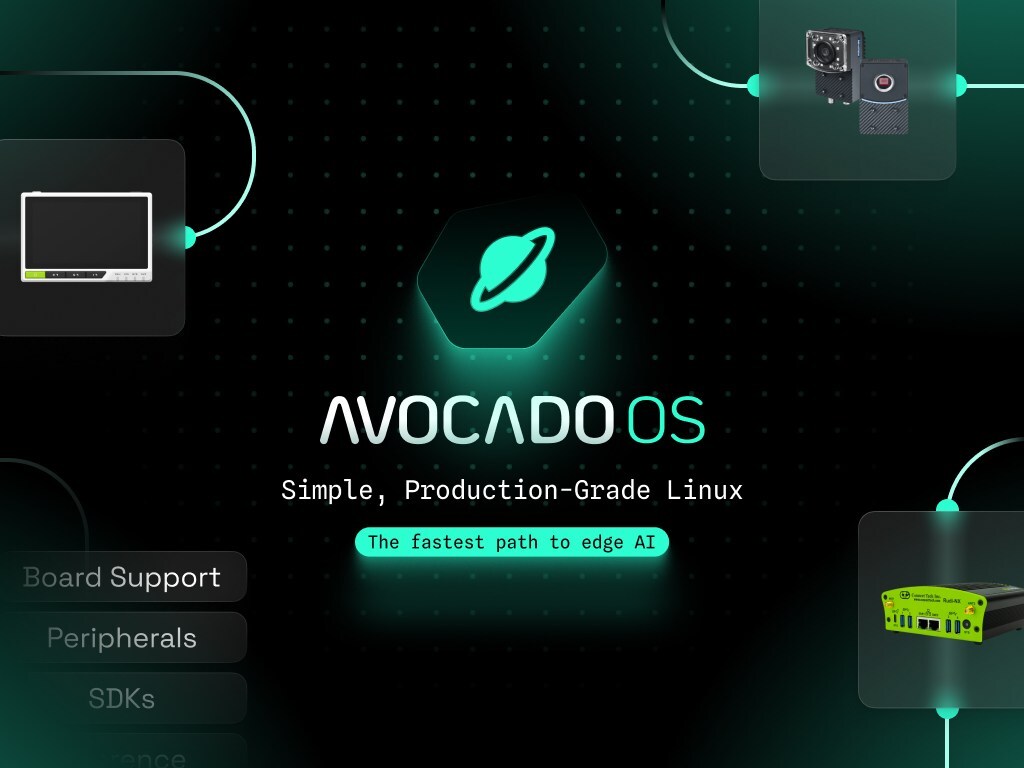एआई, वित्त और संस्कृति का संगम: 2025 में टेक्नॉलॉजी के विस्तारशील फ्रंटियर्स का एक दृश्य
Author: Editorial Desk

2025 में, प्रौद्योगिकी परिदृश्य एक तेजी से बदलते हुए पारिस्थितिकी तंत्र के समान दिख रहा है जहाँ हार्डवेयर, सॉफ्टवेयर, वित्त, मीडिया और संस्कृति कृत्रिम बुद्धिमत्ता के चारों ओर अधिक से अधिक एक-दूसरे के साथ समन्वयित हो रहे हैं। इस सप्ताह की टेक प्रेस की कहानियाँ एक ही धागे के रूप में पढ़ी जाती हैं जो निकट-भविष्य के कुछ प्रमुख रुझानों के साथ बुनी गई हैं: डिजाइन की सीमाएं बढ़ाने वाले प्रीमियम फोल्डेबल डिवाइस, एआई टूल्स और सेवाओं की उभरती अर्थशास्त्र, सामग्री लाइसेंसिंग और एआई पुनः उपयोग के बारे में प्रकाशकों और प्लेटफॉर्मों के बीच बढ़ते तनाव, और कला तथा सार्वजनिक नीति कैसे ऐसे ऑटोमेटेड सप्लायर्स और डेटा-आधारित प्रोत्साहनों के साथ बातचीत कर रहे हैं। संयुक्त रूप से, ये लेख एक बड़े बदलाव की तस्वीर प्रस्तुत करते हैं: एआई सिर्फ उत्पादकता के लिए एक उपकरण नहीं है बल्कि एक संरचनात्मक शक्ति है जो यह निर्धारित करती है कि वितरण किसका नियंत्रण है, मूल्य कैसे बनता है, और प्लेटफॉर्मों को सामग्री निर्माताओं, ग्राहकों और नागरिकों के प्रति किन दायित्वों का पालन करना चाहिए।

Honor Magic V5 का फोल्डेड और पतला रूप, प्रीमियम फोल्डेबल में थिकनेस कम करने और उपयोगिता अधिकतम करने के लिए चल रहे प्रयास का एक उदाहरण।
एक समान धागा यह भी दिखाता है कि AI को किस तरह बंडल, मूल्य तय, और लाइसेंसिंग के तरीकों से जोड़ा जा रहा है जो व्यक्तिगत और संस्थागत प्रयोग की लागत को बदल देता है। उपभोक्ता-गुणवत्ता वाले AI सहायकों से लेकर उद्यम-तैयार सूट तक, लागत का हिसाब-किताब एक सदस्यता-के-एकाधिकार से बंडल एक्सेस और जीवन-काल डील की ओर बढ़ रहा है। यह बदलाव केवल पैसे बचाने के बारे में नहीं है; यह बताता है कि संगठन AI जोखिम कैसे संभालते हैं, गुणवत्ता पर निगरानी कैसे रखते हैं, और विभागों में कैसे स्केल करते हैं। साथ ही, हार्डवेयर जगत ने फोन, टैबलेट और लैपटॉप की रेखाओं को धुँधला करने वाले डिवाइसों के साथ आगे बढ़ना जारी रखा है, जबकि सॉफ्टवेयर इकोसिस्टम उन फॉर्म फैक्टर्स के बीच संगतता की खोज करता है। कुल मिलाकर, ये विकास एक ऐसे वातावरण का निर्माण करते हैं जहाँ उत्पाद टीमें नवीनता को टिकाऊपन, प्रदर्शन को गोपनीयता, और गति को शासन के साथ संतुलित करनी होंगी।

Publishers push back as Penske Media spearheads a lawsuit against Google over AI Overviews, urging clearer licensing and fair compensation.
टेक्नोलॉजी न तो किसी खाली स्थान में है और न ही स्थिर रहती है। एक मिसाल समेकित टूल इकोसिस्टम का उभरना है जो उपयोगकर्ताओं को दर्जनों सब्सक्रिप्शन के बिना AI मॉडलों की तुलना, परीक्षण और तैनाती की अनुमति देता है। Macworld के एक फीचर में ChatPlayground AI को प्रमुखता दी गई है, जो 40+ शीर्ष AI मॉडलों तक पहुँच का वादा करने वाला जीवन-भर की सदस्यता प्लेटफॉर्म है—GPT-4o से Claude और Gemini तक—एक ही $39.99 के umbrellA के अंतर्गत। ऐसे bundles सुविधाएं और पूर्वानुमानित बजटिंग का आश्वासन देती हैं, जैसे प्रति माह 500 संदेश, क्रॉस-डिवाइस उपयोग, और स्वचालित अपडेट। यह मॉडल इस उद्योग-विश्वास को दर्शाता है कि प्रयोग की अर्थशास्त्र अपनाने को प्रेरित करेगा, जबकि उत्पाद प्रबंधकों को लाइसेंसिंग शर्तों, डेटा गोपनीयता, और मॉडल गवर्नेंस के साथ नेविगेट करना होगा।

प्रकाशक Google के खिलाफ AI Overviews पर मुकदमों के लिए Penske Media के नेतृत्व में स्पष्ट लाइसेंसिंग और उचित मुआवजे की मांग कर रहे हैं।
Fintech धीरे-धीरे AI-सक्षम भविष्य के लिए एक प्रयोगशाला बन रहा है। Analytics Insight के 2026 में देखने योग्य शीर्ष 10 Fintech ट्रेंड्स एक बदलाव को दर्शाते हैं जो वॉइस बैंकिंग, अदृश्य सहायकों, और finance-as-a-service प्लेटफॉर्म जो उपभोक्ता बैंकिंग, परामर्श सेवाओं, और एम्बेडेड फाइनेंस के बीच रेखा को धुँधला कर देते हैं। यह पूर्वानुमान AI को जोखिम स्कोरिंग, धोखाधड़ी रोकथाम, तेज़ भुगतान, और व्यक्तिगत वित्तीय कोचिंग में तैनाती के साथ गूंजता है। जैसे-जैसे वित्तीय सेवाएं अधिक वातावरण-आधारित होती जाती हैं, नियामक, स्थापित खिलाड़ी, और स्टार्टअप्स सभी डेटा संप्रभुता, उपभोक्ता सुरक्षा, और पारगमन-योग्यता के प्रश्नों से जूझेंगे। ट्रेंड‑लाईन 2026 में केवल नई विशेषताएं नहीं बल्कि नए व्यवसाय मॉडल भी होंगे—ऐसे प्लेटफॉर्म जो विभिन्न उपकरणों और चैनलों में डेटा एकत्र कर के तत्काल वित्तीय सेवाएं प्रदान करें, जब भी उपयोगकर्ता उन्हें चाहें।

2026 में देखने योग्य टॉप-10 फिनटेक ट्रेंड्स—AI को रोजमर्रा के धन प्रबंधन में शामिल करने की प्रवृत्ति की भविष्यवाणी।
Global corporate movements also mirror this AI-enabled acceleration. TeamSystem’s acquisition of Sellsy signals a clear intent to deepen the European footprint in cloud-based CRM and financial-management tools for SMEs, especially in France and Spain. The deal illustrates how AI-driven platforms are increasingly being bundled with verticalized software, transforming what had been a patchwork of on-premise and hybrid solutions into integrated, multi-country ecosystems. For small- and medium-sized enterprises, this matters: it can reduce friction when moving data across borders, speed up onboarding, and provide a more uniform security and compliance posture across different regulatory regimes. The strategic calculus is not merely about market share but about building durable, scalable platforms that can harness AI to generate insights, automate workflows, and strengthen cross-border collaboration.

Publishers eye cross-border strategies as legal actions against AI-enabled search expand beyond the United States.
In the events space, 2025 is also the year when trade shows and industry conferences emphasize the practical deployment of AI rather than speculative demos. Network X 2025 is framed as a convergence point for operators, policymakers, and technology vendors to explore AI-powered broadband networks, monetization of 5G, and the integration of sustainable infrastructure with real-world throughput. The expo promises live demonstrations, new stage formats, and hands-on experiences for attendees who want to see AI in action—from edge computing to satellite connectivity. For observers, it’s a reminder that policy and industry interest are increasingly synchronized around the same goals: performance, resilience, and accountability in a world where networks no longer merely connect people but empower data-driven services.
Public art and culture are not insulated from these shifts. In Portland, two shows expose the tension between AI-assisted processes and natural forms. Brian Smith’s ‘Locket’—a steel-and-epoxy sculpture with copper accents—offers a classical雕塑 language while inviting viewers to reflect on how automated workflows shape aesthetics. Meanwhile Roopa Vasudevan’s work at Space Gallery pushes back against the seductive pull of AI, illustrating limits and ethical questions at the edge of creation. The juxtaposition between AI-enabled production and the human need for restraint makes clear that culture remains a crucible for testing the social implications of automation, data collection, and algorithmic decisions.

Brian Smith, “Locket,” a sculpture that explores queer ecology and the material dimension of AI's influence on art.
Technologies that underpin AI are also moving into more specialized hardware and operating-system ecosystems. A Microelectronics UK demonstration of Avocado OS—an embedded Linux distro from Peridio—highlights how a scalable, updatable platform can undergird AI-enabled applications across prototypes and production. The lesson is consistent with broader industry chatter: if you want reliable AI deployment in the real world, you need robust software foundations that can be updated without sacrificing stability, security, or performance. For developers and manufacturers, it’s a reminder that the best AI tools still depend on solid infrastructure and mature tooling.

Avocado OS, an embedded Linux distro, showcased for smoothing the path from prototype to production.
Beyond the corporate strategy and hardware, the research and policy communities are intensifying their attention to the strategic dimensions of intelligence. The RAND Corporation’s Perspectives on the Artificial General Intelligence race and international security considers how competitive dynamics in pursuit of AGI may shape stability and risk. The dialogue is no longer about whether AI can outperform humans in a lab; it is about how nations balance incentives to push the frontier with commitments to avoid destabilizing arms races, miscalculation, or coercive uses. The report frames the problem as ongoing, multi-decade, multi-domain competition in AI capability, governance, and strategic signaling—an agenda that will require diplomacy, soft power, and credible deterrence as much as technical breakthroughs.
Finally, the AI policy and consumer-technology conversation is moving into the global marketplace. Google’s AI Plus initiative in Pakistan—an effort to provide broader access to advanced AI tools at a more affordable price—illustrates how tech platforms attempt to democratize capabilities while navigating regulatory, cultural, and economic realities in different markets. The move underscores a central tension: widening access must be balanced with data privacy, local data rules, and the risk of misinformation or exploitation. As consumers and small businesses gain new AI-equipped tools, policymakers will confront questions about licensing, licensing costs, and the implications of AI-driven recommendations across multilingual and multi-country contexts.

RAND’s analysis of the AGI race and its implications for international security.
The year 2025 thus stands as a crossroads: AI-driven products and services are redefining what is produced, how it is monetized, and who benefits from it. Yet across the board there is a common thread—value increasingly accrues to those who can orchestrate access to data, control the distribution channels, and implement governance that preserves trust. The conversations around publishers and AI, bundled AI tool ecosystems, cross-border corporate strategies, and policy-centric AI initiatives all point to a future where the success of technology hinges not only on clever algorithms or shiny hardware but on robust business models, transparent licensing, and responsible stewardship.
In short, the tech world is learning to live with AI as a governance and strategic instrument as much as a productivity tool. Consumers will demand affordable access, publishers will demand fair compensation and clear reuse terms, and governments will seek to ensure that cross-border AI deployments respect privacy, security, and civil rights. The path forward lies in pragmatic collaboration—between platform owners and content creators, between hardware manufacturers and software developers, and between policymakers and the public—so that AI serves as an amplifier of human capabilities rather than a wedge that deepens inequality or uncertainty.